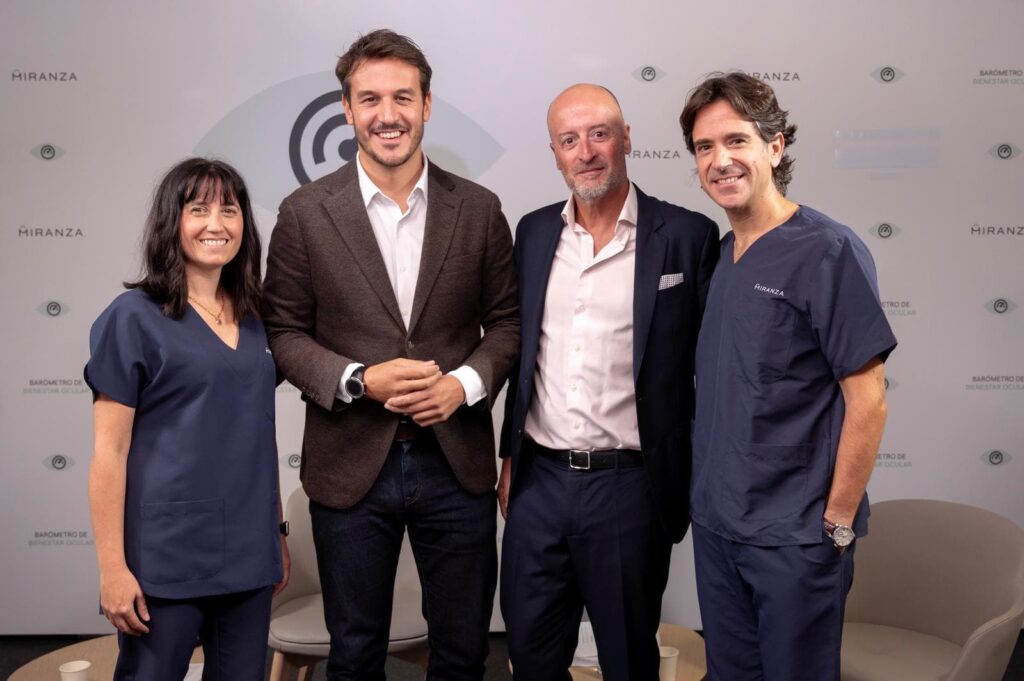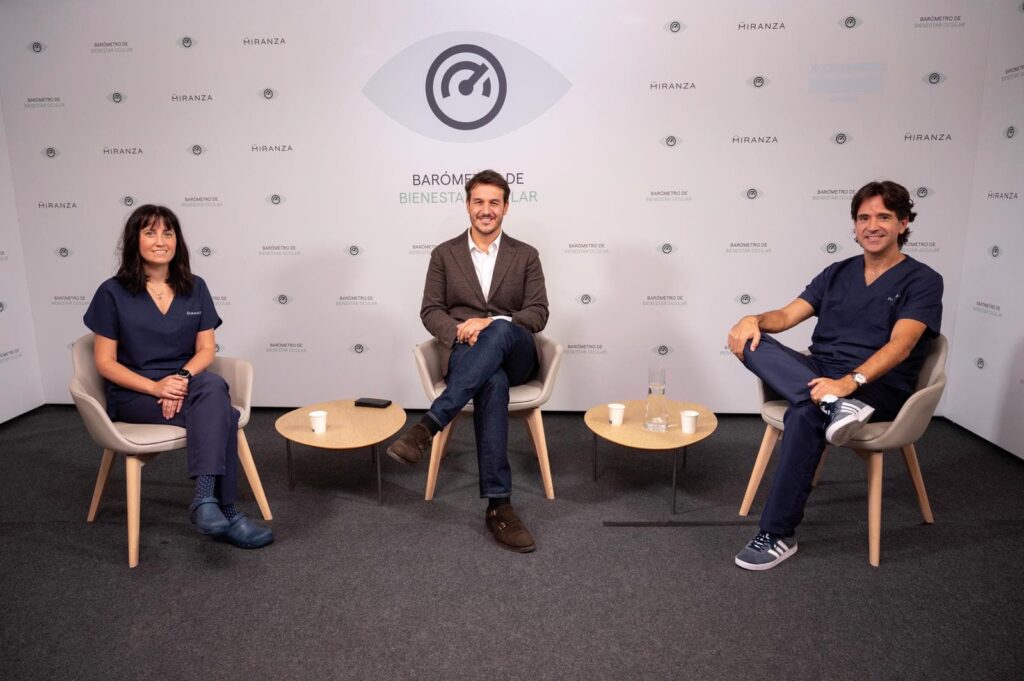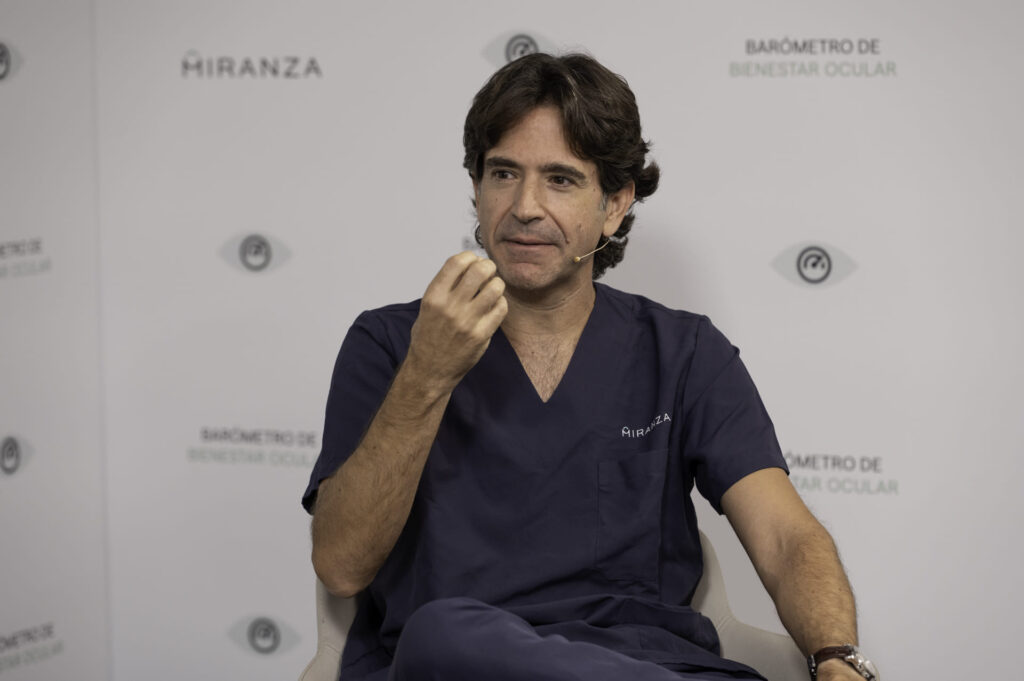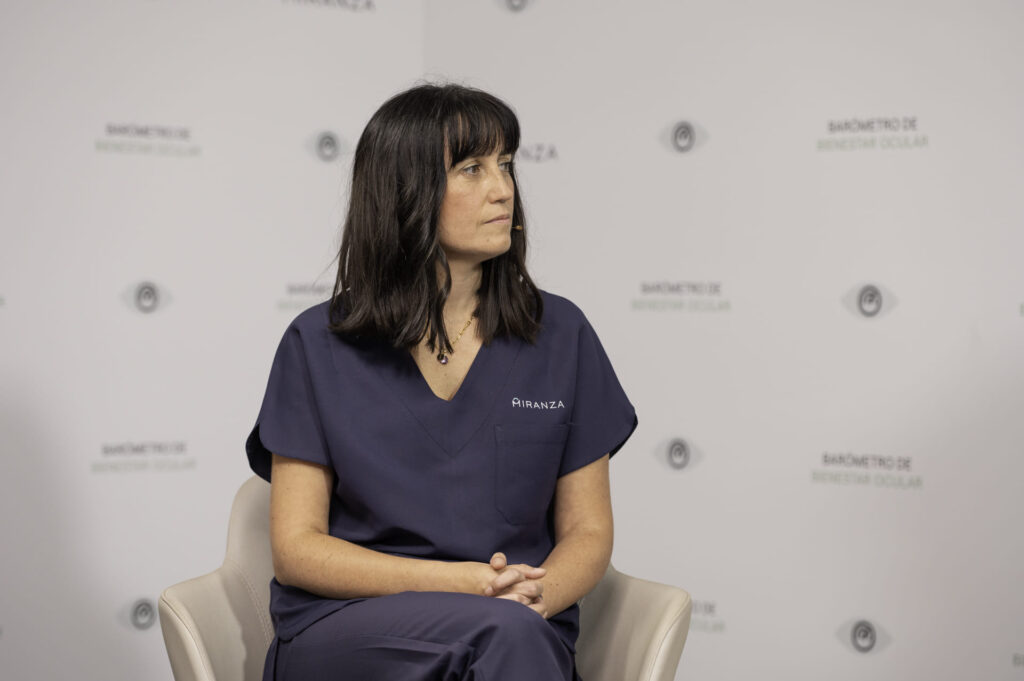
We barely pass in eye health and well-being
The score from our V Barómetro de Bienestar Ocular is 5.23 out of 10, although people over 40 fall below passing.
Dry eye syndrome, increasingly common, is now affecting young people and teenagers due to excessive screen use.
Once again, we highlight the low score Spaniards receive in terms of eye health and well-being, according to the data from the V Barómetro de Bienestar Ocular. This study, based on surveys of a thousand individuals, was presented on Wednesday, October 8, the day before World Sight Day, at the Madrid headquarters of IMO Grupo Miranza.
Myopia (37%), astigmatism (36%), and presbyopia (31.2%) remain the most commonly diagnosed eye conditions in Spain. According to the study, fewer than half of those affected by these or other conditions report having undergone medical or surgical treatment—except in the case of glaucoma (62%). In this context, reliance on visual aids is high: 73% use glasses regularly or occasionally, and 17% wear contact lenses, which cause discomfort for 34% and 38% of users, respectively.
Beyond diagnosed conditions, blurred vision and light sensitivity are the most common symptoms reported (33% each), followed by irritation, itching and stinging, a sense of vision loss, and dry eyes—symptoms that affect more than a third of the population. Tearing is the symptom that causes the most discomfort among those who experience it (12% of respondents).

In 2021, Miranza launched a new barometer to assess the eye health of Spaniards using key variables. Since the second edition in 2022, the data has also been used to derive a quantitative index or score out of 10. Since then, the annual scores have been: 5.24 (2022); 5.22 (2023); and 5.20 (2024).
Daily Limitations
According to the Barometer results, reading on a mobile phone and going up and down stairs are two of the most frequent and important vision-related activities, and also among those that cause the most difficulty. Nearly half of respondents say their vision affects their ability to drive (46%) and work (43%). It also impacts their social life (33%) and ability to play sports (21%). Notably, 17% say their visual condition affects their motivation to leave the house.
Despite this, and although 73% say they are concerned about their eyesight, 90% agree that it should be taken care of, and 74% support having annual eye exams—especially those over 40. However, no age group gets their eyes checked on a yearly basis.
The Role of Habits
This lack of commitment to prevention is also reflected in the little importance given to habits related to eye health and well-being. Fewer than half (41%) believe their habits affect their eyesight.
While most people (64%) think there’s a genetic component to vision problems, and more than half believe there are other contributing factors such as pollution (58%), far fewer recognize the impact of modifiable habits like smoking and alcohol (36%), diet (34%), or exercise (18%) on eye health. Sleep, however, is given slightly more weight (51%), though it may not be an easy habit to change.
Regarding how our habits affect eye health, Dr. Marco Sales states that “it is a fact that smoking, alcohol, poor diet, and a sedentary lifestyle impact the eyes, which are a vascularized organ and therefore influenced by the overall functioning of the body. Taking care of our habits undoubtedly contributes to better eye health and well-being.”

Dry Eye, a Growing Unmet Need
When analyzing satisfaction with treatments, more than 80% of patients who have undergone refractive or cataract surgery are satisfied with the outcomes. However, only half of those treated for dry eye report being happy with the results.
This is a noteworthy finding, as dry eye is increasingly prevalent—affecting 27% of the population, according to the survey—and it is now impacting young people and teenagers.
According to ophthalmologist Ioana Romero (Bilbao) from Miranza, who spoke during the presentation of the study, “dry eye is emerging among the younger population, whereas traditionally, dry eye syndrome has been associated with older people.” The ophthalmologist attributes this trend to digital lifestyles and advocates for promoting outdoor activities: “if we were all shepherds, for example, dry eye cases would decrease by 80%.”
The ophthalmologist adds, “it’s not normal to live with a stone in your shoe and not take it out. Nor is it normal to live with symptoms and not try to address them, especially when, in most cases, there is a solution. We can act on almost all symptoms through lifestyle habits and medical-surgical techniques”.
